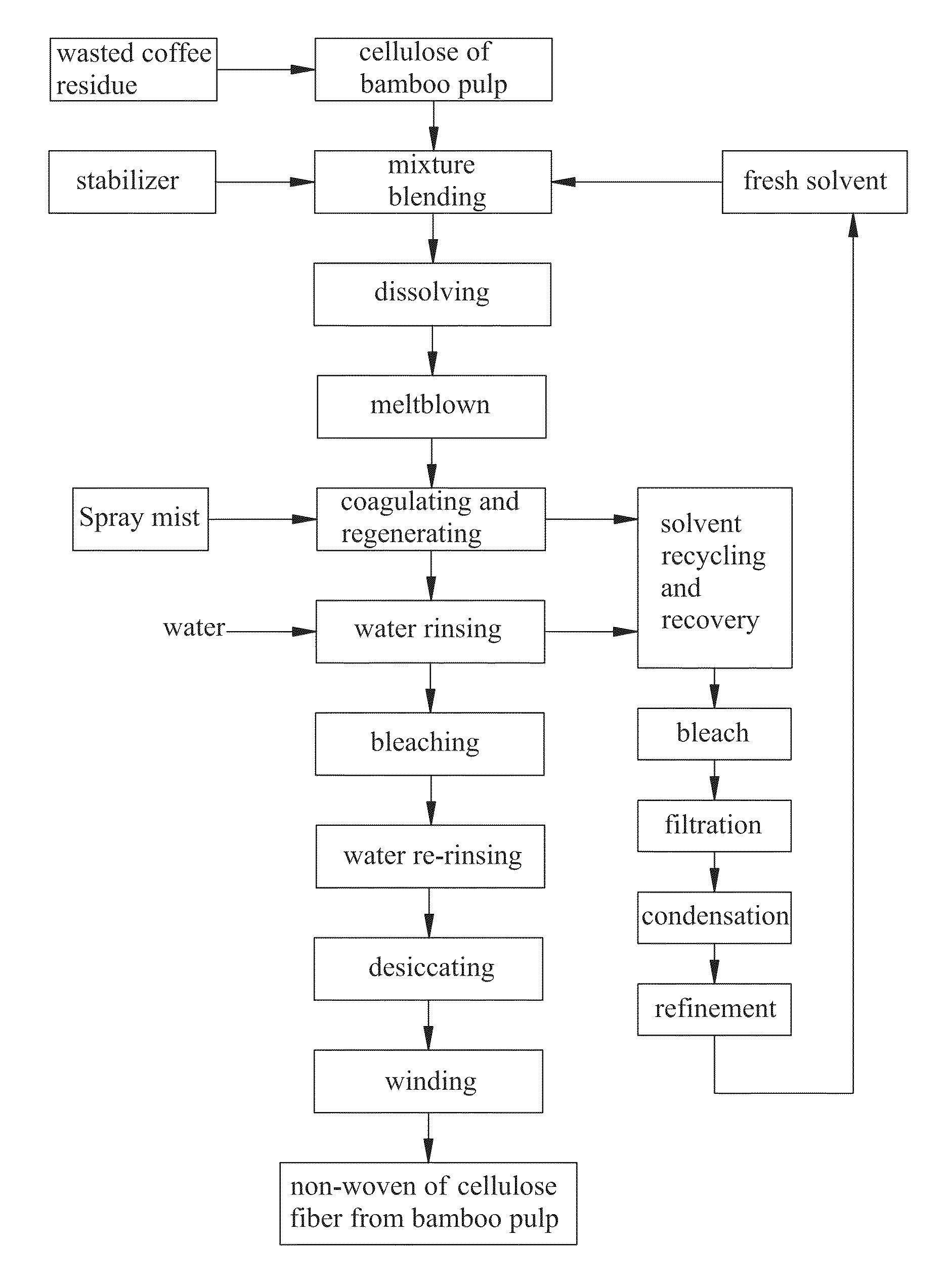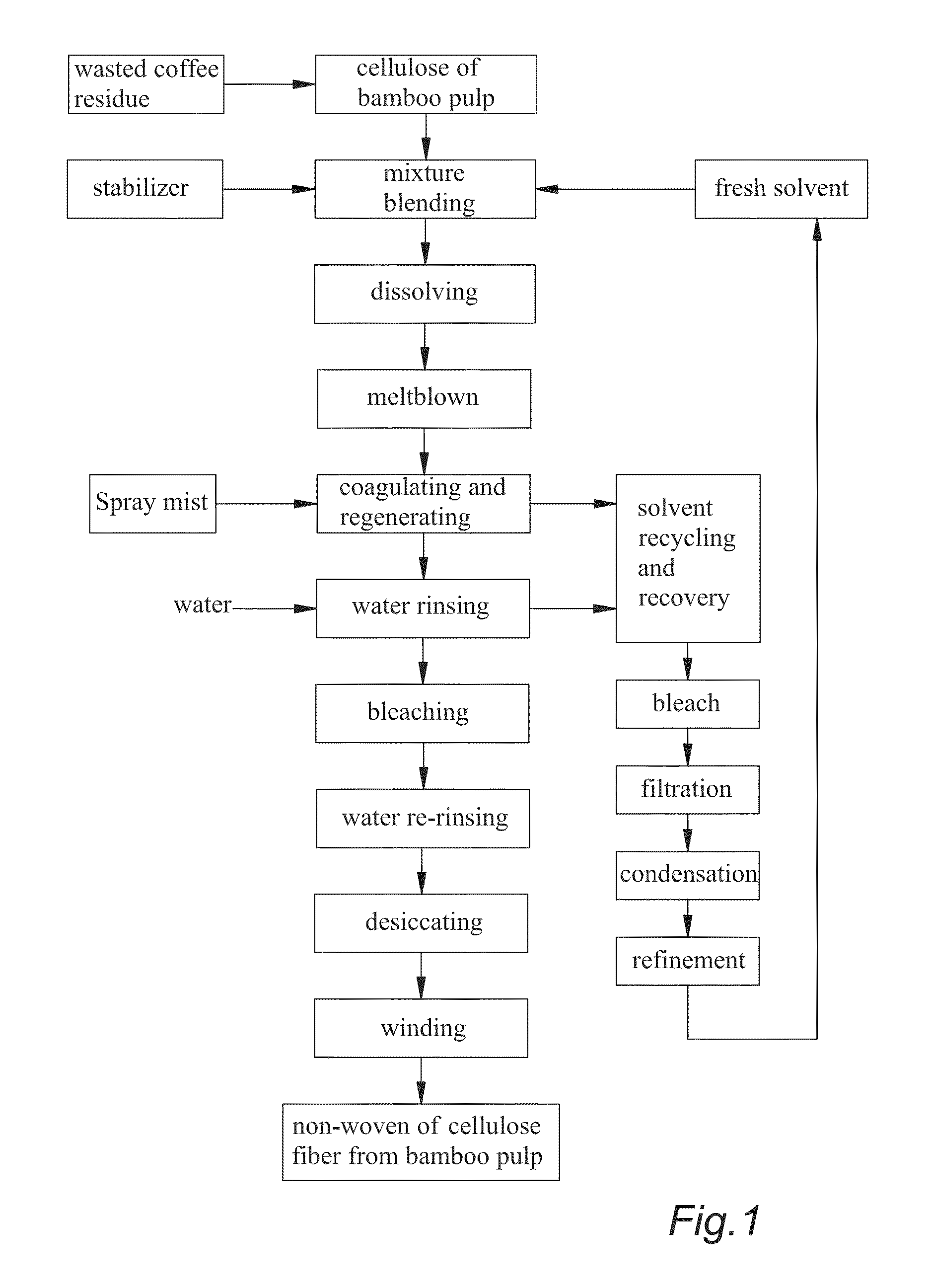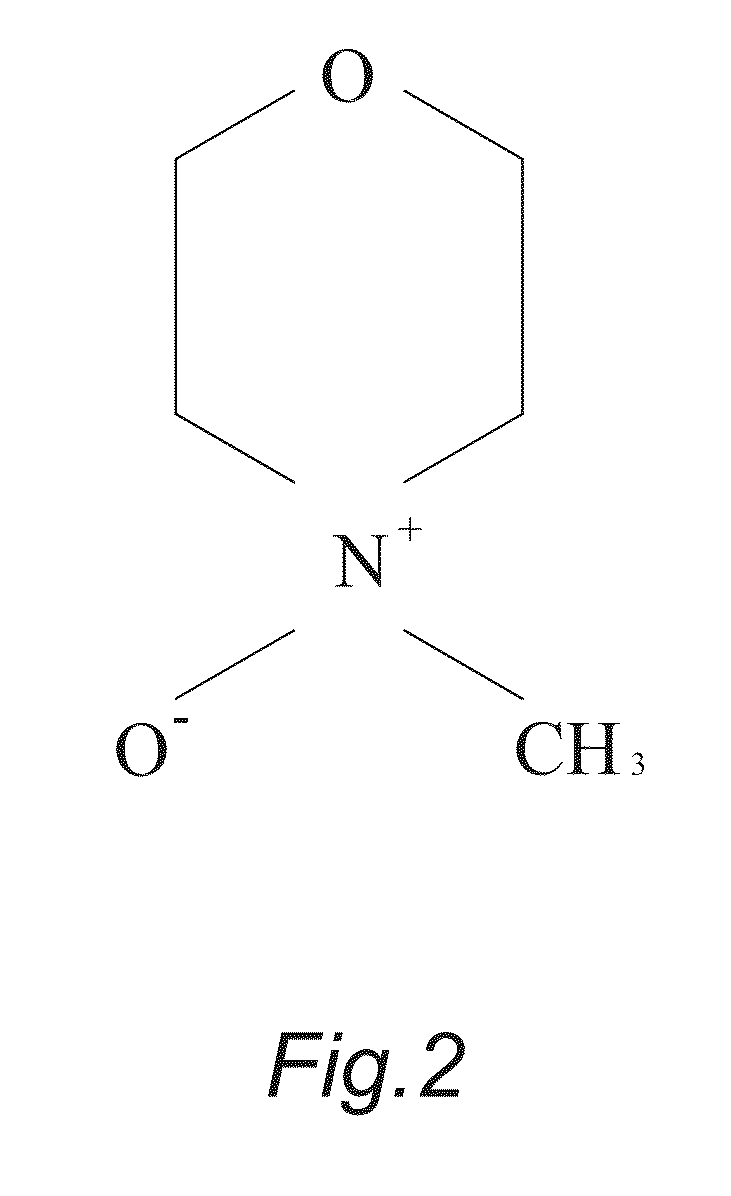Processing method of non-woven intrinsically with enhanced deodorant feature from bamboo
a non-woven, intrinsically enhanced technology, applied in the direction of sustainable manufacturing/processing, melting spinning methods, artificial filament recovery, etc., can solve the problems of wasting non-woven fabric from chemical synthetic fibers after having been used, incurring malignant impact on the environment, and foregoing mainland china invention patents, etc., to achieve enhanced deodorant feature, excellent degree of air permeability and water absorption ra
- Summary
- Abstract
- Description
- Claims
- Application Information
AI Technical Summary
Benefits of technology
Problems solved by technology
Method used
Image
Examples
embodiment 1
Samples in Number 1-10 for the Present Invention
[0039]Put wasted coffee residue into selected bamboo pulp with degree of polymerization (DP) in range of 400-800 to mutually blend together with primary dissolving solvent N-methylmorpholine N-oxide (NMMO) and various additive ratios of stabilizer 1, 3-phenylene-bis 2-oxazoline (BOX) to form a slurry via blending, dissolving and rapid grinding processes under temperature in range of 50 degree of Celsius and 70 degree of Celsius (50° C.-70° C.). Then, dehydrate it via heating up to temperature in range of 80 degree of Celsius and 100 degree of Celsius (80° C.-100° C.) by vacuum thin film evaporator (VTFE) for 5 minutes to decrease water content thereof down to range of 5-13% so that a homogenized mucilaginous dope is formed. By meltblown method, the dope D is extruded out of spinnerets 3 to form thread bundle, the dope D is subsequently fed into a die assembly 2 and forcedly extruded out of spinnerets 3 via a quantitative metering gear ...
embodiment 2
Samples in Number 11-20 for the Present Invention
[0041]Subsequently, perform strength test of nonwoven for samples 11 through 20, which are prepared into different basis weights of nonwoven in accordance with respective degree of polymerization (DP) and additive ratio of anti-recession stabilizer for DP shown in TABLE 1, by criteria of CNS5610 with following procedure.
[0042]1. Specimen Preparation:
[0043]Respectively obtain 10 pieces of specimens for each cross direction (CD) and mechanical direction or machine direction (MD) with specimen length being over 180 mm and specimen width being 2.54 mm.
[0044]2. Strength Testing Method:
[0045]By using universal strength testing machine with holding width for specimen holding jaws of testing fixture being set 76 mm under crosshead speed for extension test being set 300 mm / min, respectively perform strength test for each of 10 testing specimens.
[0046]3. Testing Results:
[0047]Respective strengths of nonwoven for samples 11 through 20 of nonwove...
embodiment 3
Samples in Number 21-32 for the Present Invention
[0049]Now, perform air permeability test and water absorption test for samples 21 through 32, which are prepared in accordance with respective degree of polymerization (DP) and basis weights of nonwoven, by criteria of CNS5612 with following procedure.
[0050]1. Air Permeability Test:
[0051]Respectively obtain 4 pieces of specimens with specimen dimension being 26×26 cm2 for each sample. By using Textest FX 3300 Air Permeability Tester, respectively perform test for each of 12 specimens 21 through 32.
[0052]2. Water Absorption Test:
[0053]Respectively obtain 5 longitudinal pieces of specimens with specimen width being 76 mm, specimen weight being 5.0±0.1 g and specimen length being determined in accordance with the specimen weight. For testing procedure of water absorption test: firstly, put each specimen in a holding basket, and then dunk the holding basket with specimens in water in totally immersion manner for 10 seconds; secondly, lift...
PUM
| Property | Measurement | Unit |
|---|---|---|
| temperature | aaaaa | aaaaa |
| temperature | aaaaa | aaaaa |
| viscosity | aaaaa | aaaaa |
Abstract
Description
Claims
Application Information
 Login to View More
Login to View More - R&D
- Intellectual Property
- Life Sciences
- Materials
- Tech Scout
- Unparalleled Data Quality
- Higher Quality Content
- 60% Fewer Hallucinations
Browse by: Latest US Patents, China's latest patents, Technical Efficacy Thesaurus, Application Domain, Technology Topic, Popular Technical Reports.
© 2025 PatSnap. All rights reserved.Legal|Privacy policy|Modern Slavery Act Transparency Statement|Sitemap|About US| Contact US: help@patsnap.com



